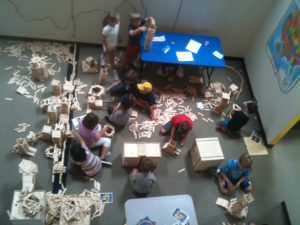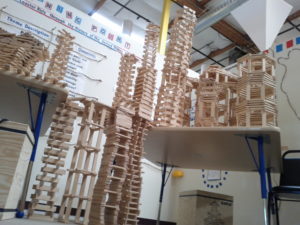Intriguing article in the Wall Street Journal: Educating the Next Steve Jobs — points out that a narrowly defined pathway to “success” where failure is anathema is the recipe for conformity, not innovation.
In most high-school and college classes, failure is penalized. But without trial and error, there is no innovation. Amanda Alonzo, a 32-year-old teacher at Lynbrook High School in San Jose, Calif., who has mentored two Intel Science Prize finalists and 10 semifinalists in the last two years—more than any other public school science teacher in the U.S.—told me, “One of the most important things I have to teach my students is that when you fail, you are learning.” Students gain lasting self-confidence not by being protected from failure but by learning that they can survive it.
In a related recent post, Massimiliano Ghini (our Director of Global Strategy), wrote about the challenge of a climate for innovation in business: ”We all know that the key to increase our competitiveness is innovation, but in the current reality of increased pressure and failure, change fails and innovation falls behind. How can we unblock the creative thinking in this scenario?” Max is identifying a very similar challenge as the conformist school dichotomy:
When we create a “pressure cooker” climate, we don’t get innovation… yet at the same time we have an urgent pressure to generate results.
 How do we balance these two? We get so caught in “rules” and “SOPs” and a kind of contratual approach that the sense of wonder and spontaneity shrivels. One way to sustain innovation to shift our understanding of “work” and stop treating it as a negative, unpleasant experience. What if a kids at school, or teammembers at work, can’t actually tell the difference between “work” and “play”?
How do we balance these two? We get so caught in “rules” and “SOPs” and a kind of contratual approach that the sense of wonder and spontaneity shrivels. One way to sustain innovation to shift our understanding of “work” and stop treating it as a negative, unpleasant experience. What if a kids at school, or teammembers at work, can’t actually tell the difference between “work” and “play”?
One of my favorite aspects of Six Seconds’ Synapse School is the sense of wonder and creativity you experience just walking in the door. Recently I heard a child visitor tell her parents how she wished she could go school in a place that was so full of energy. While there are classes, and while there’s “work” happening, the whole place is bursting with the energy of play. While there is a robust structure and a clear focus, there is also a kind of “joyful anarchy” that is palpable.
At Synapse, there’s a room near the entrance which is full of “Kapla” blocks: simple, flexible, flat, wooden rectangles pictured above. There’s a kind of constant evolution in the room, and I’m amazed every time I see what the kids are creating. This is the spirit I’d love to see in every place of work and learning. A place of contribution and shared creation bound by care, not by compliance. I asked one boy, around 9 years old, “What happens when you run out of blocks, do you have rules about which buildings you take apart?” He looked surprised, and answered: ”No, we just respect on another’s work.”



